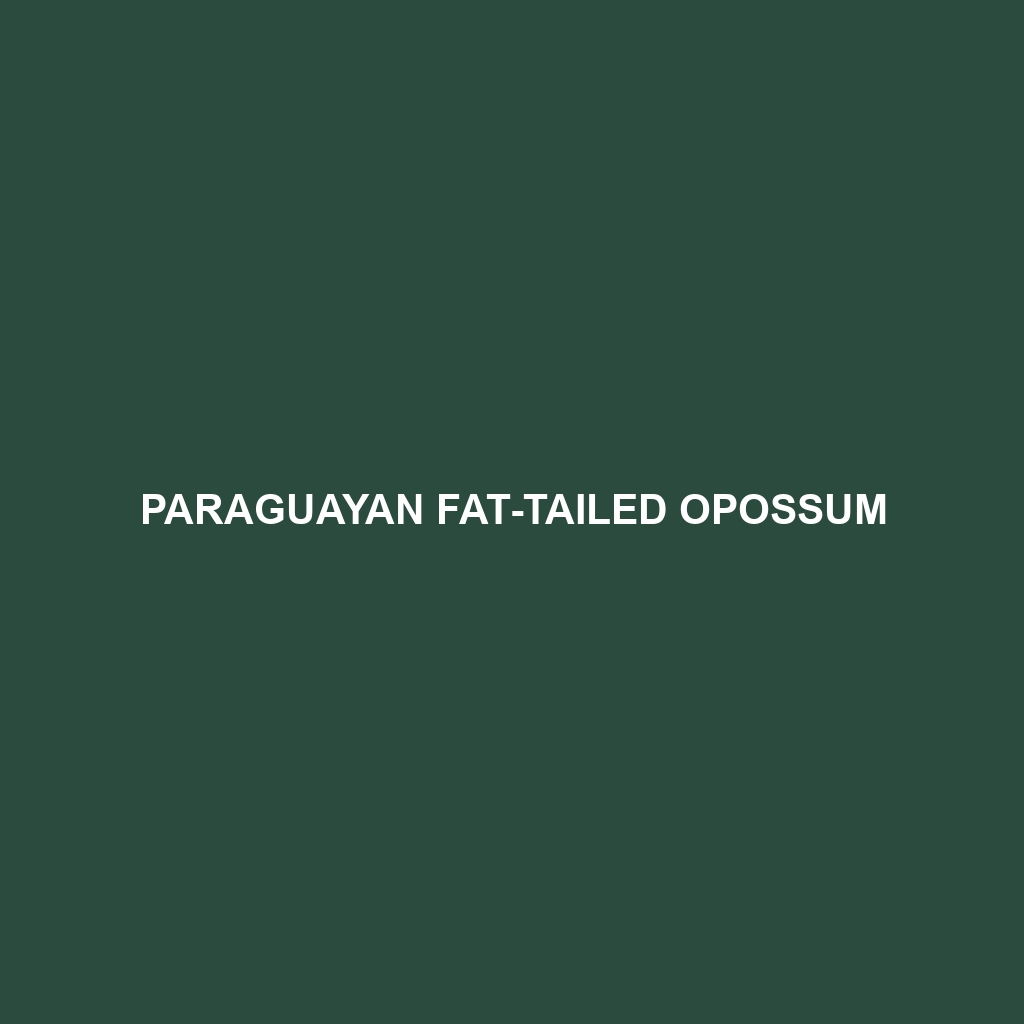Paraguayan Fat-tailed Opossum (Thylamys macrurus)
The Paraguayan Fat-tailed Opossum, scientifically known as Thylamys macrurus, is a small marsupial native to parts of South America. Known for its distinctive fat-storing tail, this opossum is an intriguing example of adaptability and survival in its natural habitats. Despite their diminutive size, these creatures play a crucial role in their ecosystems, contributing to seed dispersal and insect control.
Physical Characteristics
Size: The Paraguayan Fat-tailed Opossum is relatively small, with an average body length of 8-12 centimeters (3-5 inches). Their tails can add an additional 10-15 centimeters (4-6 inches) to their overall length.
Weight: These opossums typically weigh between 20-50 grams (0.7-1.8 ounces).
Coloration: They exhibit a greyish-brown fur on their dorsal side, while their ventral side is usually lighter, ranging from white to a pale cream. Their ears are large and prominent, often a dark, almost black color.
Special Features: The most notable feature of this species is their tail, which can store fat and swell up, providing an energy reserve during leaner times. The tail is prehensile, aiding in their arboreal activities.
Behaviors
Social Interactions: Paraguayan Fat-tailed Opossums are generally solitary animals. They come together primarily for mating purposes and otherwise maintain individual territories.
Feeding Habits: They are omnivorous, with a diet consisting of insects, small vertebrates, fruits, and seeds. Their varied diet helps in controlling pest populations and promoting plant growth through seed dispersal.
Activity Patterns: These opossums are nocturnal, meaning they are most active during the night. During daylight hours, they rest in nests made from leaves and other plant materials.
Ecological Roles
Seed Dispersers: By consuming fruits and defecating the seeds elsewhere, they play a significant role in plant propagation.
Pest Control: Their diet includes a variety of insects, helping to regulate insect populations in their habitats.
Habitat
Geographical Range: They are primarily found in Paraguay, but their range extends into parts of Brazil and Bolivia.
Preferred Environments: Paraguayan Fat-tailed Opossums are adaptable to various habitats, including tropical forests, savannas, and scrublands. They often inhabit areas with dense vegetation where they can find ample food and shelter.
Adaptations
Survival Strategies: The ability to store fat in their tails is a unique adaptation that allows them to survive periods of food scarcity. Their nocturnal nature helps them avoid many predators and the heat of the day.
Arboreal Skills: With prehensile tails and dexterous limbs, they are well-adapted to a life spent climbing through trees and shrubs.
Conservation Status
Current Status: As of the latest assessments, the Paraguayan Fat-tailed Opossum is not listed as endangered. However, their habitats are increasingly threatened by deforestation and human encroachment, making habitat preservation crucial for their continued survival.
Fun Facts
Tail Tale: Unlike many other animals that store fat in their bodies, this opossum stores it in its tail, allowing it to maintain mobility and agility even during lean times.
Marsupial Mysteries: As marsupials, females carry and nurse their young in a pouch, providing a safe environment for the underdeveloped newborns to grow and thrive.
Night Vision: Equipped with large eyes, they have excellent night vision, which aids in their nocturnal lifestyle.
The Paraguayan Fat-tailed Opossum is a fascinating creature whose adaptability and ecological roles highlight the intricate balance of natural ecosystems. Protecting their habitats ensures these unique opossums continue to thrive and contribute to their environments.
